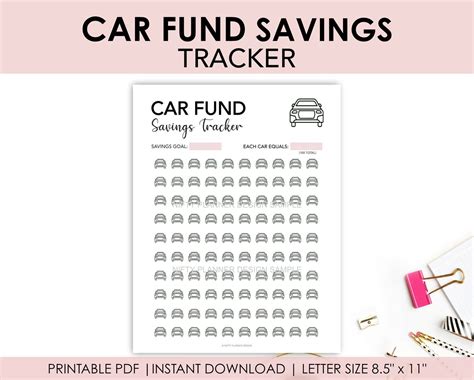Camming Your Car: How to Save Money on Your Upgrade
Modifying your car's camshaft, or "camming" it, is a popular upgrade among enthusiasts seeking improved performance. However, the cost can be significant. This comprehensive guide explains how to save money while camming your car, covering everything from planning and sourcing parts to installation and potential pitfalls.
What is Camming and Why Do It?
Before diving into cost-saving strategies, let's understand what camming entails. The camshaft is a crucial component in your engine, controlling the opening and closing of the intake and exhaust valves. A performance camshaft alters the valve timing and duration, leading to increased horsepower and torque, often at the expense of low-end drivability. This upgrade is particularly beneficial for cars that spend more time at higher RPMs, such as those used for racing or spirited driving.
How to Save Money Camming Your Car
Saving money on a camshaft upgrade requires careful planning and execution. Here's a breakdown of effective strategies:
1. Research and Planning: The Foundation of Savings
Thorough research is paramount. Knowing precisely which camshaft profile suits your engine and driving style is crucial. Choosing the wrong cam can lead to wasted money and suboptimal results. Factors to consider include:
- Engine specifications: Your engine's displacement, compression ratio, and other internal components will dictate the suitability of different camshafts.
- Driving style: A cam aggressive enough for racing might be unsuitable for daily driving.
- Budget: Set a realistic budget before you start shopping. This helps avoid impulse purchases and keeps you focused on cost-effective solutions.
2. Sourcing Parts Wisely: Where to Find the Best Deals
Finding the right camshaft at the best price requires smart sourcing.
- Used Parts: Consider purchasing a used camshaft in good condition. This can significantly reduce costs, especially for popular models. Inspect thoroughly for wear and tear before purchase.
- Online Marketplaces: Websites like eBay and forums dedicated to your car model often have used and new parts at competitive prices. Be sure to check seller ratings and reviews.
- Direct from Manufacturers: While often more expensive, buying directly from reputable camshaft manufacturers sometimes offers better warranties and potentially better pricing depending on sales and promotions.
3. Choosing the Right Installation Method: DIY vs. Professional
This decision heavily impacts your overall costs.
- DIY Installation: This offers the greatest potential for savings. However, it requires mechanical aptitude, specialized tools, and a clean, well-organized workspace. Mistakes can be costly, potentially damaging your engine.
- Professional Installation: While more expensive upfront, professional installation minimizes the risk of damage and ensures proper setup. This is particularly crucial for complex camshaft installations.
4. Maximize Existing Components: Avoiding Unnecessary Upgrades
Often, a camshaft upgrade necessitates other modifications. However, carefully evaluating the necessity of these upgrades can save money.
- Necessary Upgrades: Things like valve springs, pushrods, and lifters are often required for compatibility with a performance camshaft. These are necessary expenditures.
- Unnecessary Upgrades: Avoid unnecessary upgrades like high-flow heads or aftermarket intake manifolds unless absolutely required for optimal performance with your chosen camshaft.
5. Careful Planning Minimizes Unexpected Costs
- Labor Costs: If opting for professional installation, factor in labor costs early. Get multiple quotes before committing.
- Tool Costs: If performing DIY installation, list all necessary tools and check if you already own them, reducing tool acquisition costs.
- Unexpected Issues: Be prepared for unexpected repairs or part replacements. Having a contingency fund can prevent budget overruns.
Frequently Asked Questions
What are the potential downsides of camming my car?
A performance camshaft often reduces low-end torque, resulting in sluggish performance at low RPMs. It can also affect fuel efficiency and increase engine noise. Proper tuning is crucial to mitigate these downsides.
How much does it typically cost to cam a car?
The cost varies drastically based on the camshaft itself, the need for additional parts, and whether you install it yourself or hire a professional. Costs can range from a few hundred dollars to several thousand.
Can I cam my car without replacing other components?
In some cases, you might be able to install a milder camshaft without replacing other components. However, this depends heavily on your specific engine and the camshaft chosen. Always consult a camshaft specification sheet to determine compatibility.
How long does it take to install a camshaft?
Installation time varies greatly depending on the car, the mechanic's experience, and any unforeseen complications. A simple installation could take a few hours, while complex installations could take days.
Will camming my car void my warranty?
Modifying your car's engine, including camshaft upgrades, typically voids any existing warranty on the engine and related components. Check your warranty documentation for details.
By meticulously planning, carefully sourcing parts, and making informed decisions regarding installation, you can significantly reduce the cost of camming your car while still reaping the performance benefits. Remember that patience and thorough research are your best allies in achieving cost-effective upgrades.

